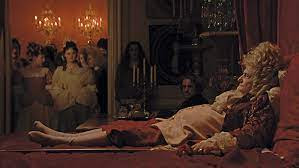
The backlash against Martin McDonagh's Three Billboards Outside Ebbing Missouri crested on Oscar night as Guillermo del Toro's winning, but slight The Shape of Water took home the Best Picture trophy. In praising Three Billboards..., I don't mean to diss del Toro. He is a gifted filmmaker and The Shape of Water has many enchanting moments. There are certainly many Best Picture winners that are far worse. I never get in a high dudgeon anymore about the Oscars. It is an industry award and there are too many inside Hollywood shenanigans to expect my favorites to be awarded. There were quite a few films this year, as always, that I found to be superior to the winner that did not get nominated: Columbus, A Quiet Passion, Good Time, etc. I can't get too worked up about this silly spectacle anymore. I remember being flummoxed when Dances With Wolves beat out Goodfellas, but, secure in my dotage and comfortable with my own pantheon, I am more equivocal about the passing fancies of the academy. I even think they got it right in 1941: How Green Was My Valley is a better film than Citizen Kane, but I don't expect the world to cotton to my particular view.
Three Billboards... is a masterpiece and, after two previous very good features, vaults McDonagh to the first rank of filmmakers. Years from now, viewers will be able to feast on the ample bounty of supple supporting performances in the film: Abbie Cornish, Lucas Hedges, Zeljiko Ivanek, Peter Dinklage, Clarke Peters, Caleb Landry Jones and John Hawkes. Each benefits from the rich script and restrained direction by McDonagh. As does the justly praised lead trio of Frances McDormand, Woody Harrelson and Sam Rockwell.
Where Three Billboards... falls short, according to the naysayers, is in its inaccurate portrait of present day America. I won't touch this argument because I don't think this was McDonagh's intent. Even a cursory glance at his oeuvre reveals that he is too in love with black humor and blarney to be regarded as a realist. His theatrical tropes here, such as the titular billboards, serve to capture the tenor of our rancorously divided times, not the reality. When Lars von Trier, in Dogville, paints a grim allegorical portrait of our nation I can accuse him of the same artistic overkill that undermines Sartre's The Respectful Prostitute, but I cannot accuse him of being untrue to his artistic impulses.
Like Dogville, Three Billboards takes its blueprint from Elizabethan and Jacobean revenge plays such as The Spanish Tragedy and The White Devil. The vengeance that Frances McDormand's Mildred seeks is too outsized to be sated, so it spills over into her community in an endless cycle of reprisals. McDonagh tips his hand in the songs picked for the film: "Last Rose of Summer". "Walk Away Renee", "Buckskin Stallion Blues", "Streets of Laredo", "The Night They Drove Old Dixie Down", each a lament for a loss that cannot be regained. Some see the ending of Three Billboards... as hopeful, two lost souls burying the hatchet to join a noble quest. I do not. I see two damaged individuals joined in a folie a deux pursuing one of the oldest and least merciful of human impulses; an eye for an eye. Whether I share this bleak view is moot, Three Billboards...is a supremely effective and affecting film. (3/6/18)




































